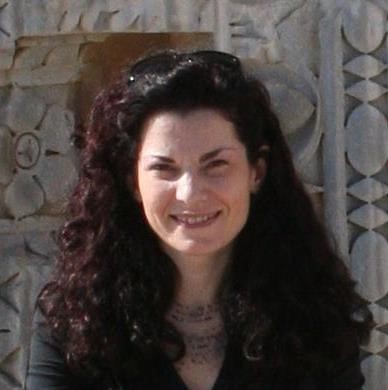Plenary & Invited Speakers
Plenary Speaker
Helmut Cölfen
University of Konstanz, Germany
Abstract:
Biomineralization yields materials with unsurpassed properties although they are usually made of materials with poor properties like calcium carbonate or -phosphate or silica. The secret is the precisely engineered organic-inorganic hybrid structure, which is often hierarchical over several levels. Therefore, Biominerals can serve as valuable archetypes for useful materials. In this presentation, examples will be given, how Bioinspiration can lead to advanced materials for medical applications.
The first example demonstrates the principle of bioinspired mineralization as such. Using cellulose nanocrystals coated by polyacrylic acid, a hierarchical template with chiral Bouligand structure can be self-assembled. This can be subsequently mineralized with calcium carbonate and while the inner structure is mineralized with amorphous calcium carbonate (ACC) nanoparticles making it tough, the outer layers contain calcite nanoparticles making it hard. Together, these two layers form a material with outstanding mechanical properties also exhibiting photonic properties by the chiral structure.Read More
Bio:
HELMUT CÖLFEN is full professor for physical chemistry at the university of Konstanz. His research interests are in the area of nucleation, classical and non-classical crystallization, Biomineralization, synthesis of functional polymers, directed self assembly of nanoparticles and fractionating methods of polymer and nanoparticle analysis. His group has made contributions in high resolution particle size analysis with Angström resolution in solution, Mesocrystals, Nonclassical Nucleation and Crystallization, CaCO3 crystallization, bio-inspired mineralization, synthesis of double hydrophilic block copolymers and additive controlled crystallization. He has published more than 400 papers and was listed among the top 100 chemists 2000 – 2010 by Thomson Reuters.
Invited Speakers
Maria Vamvakaki
University of Crete, Greece
Abstract:
Polymer modification of inorganic nanomaterials is a facile route to enhance the stability, activity and functionality of the inorganic colloids.1 Herein, we present novel approaches in polymer chemistry used to embed or coat inorganic nanomaterials, in the form of metal or metal-oxide particles, with functional and/or responsive polymers: i) emulsion copolymerization was employed to prepare responsive microgel particles into which different metal nanocatalysts (i.e. Ag, Pt, Ru, Pd and Au) were grown.2 Such pH-responsive microgels impregnated with the nanoparticulate catalysts have attracted great attention for use as microreactors in the field of catalysis both in batch and flow processes; ii) the facile functionalization of anatase TiO2 nanoparticles by an in-situ surface modification approach, using preformed polymer chains synthesized by RAFT polymerization, was employed to enhance the photocatalytic performance of the inorganic colloids (Figure 1a,b);3 iii) multi-responsive polymers were anchored onto the surface of SiO2 nanospheres and microrods using the “grafting-from” approach (Figure 1c). This enabled the synthesis of functional core-shell particles,4,5 hollow polymer capsules,6,7 hybrid Janus nanoparticles8 and responsive, hollow microrods.9 The multi-responsive properties and novel phase behavior of the nano-objects in aqueous media were investigated
Bio:
Maria Vamvakaki is a Professor at the Department of Materials Science and Technology of the University of Crete and an affiliated Faculty Member at the Foundation for Research and Technology – Hellas. Prof. Vamvakaki holds a doctoral degree in Polymer Chemistry from the University of Sussex, UK. Next, she became a post-doctoral associate at the School of Chemistry, Physics and Environmental Science at the University of Sussex, and then a Visiting Assistant Professor and post-doctoral fellow in Chemistry at the Department of Physical Sciences of the University of Cyprus. She was also a visiting Professor at the Department of Materials Science and Technology, of the University of Crete and a visiting scientist at the School of Chemistry, Physics and Environmental Science at the University of Sussex. Prof. Vamvakaki is leading the Materials Synthesis Group at the Department of Materials Science and Technology of the University of Crete and her expertise focus on the synthesis and characterization of polymeric and organic/inorganic hybrid materials, polyelectrolytes/polyampholytes and microgels/hydrogels. Her current research interests include the synthesis of functional and stimuli-responsive polymeric materials and the self-assembly of macromolecules in solution and at a surface.
Anastasios J. Tasiopoulos
University of Cyprus, Cyprus
Abstract:
Our group has been investigating single-crystal to single-crystal (SCSC) transformation reactions of a series of MOFs targeting to fine tune their properties. For example, a series of Single Crystal Coordinating Ligand Exchange (SCCLE) transformations were investigated in two families of lanthanide MOFs and led to a significant amplification of the Eu3+ emission signals (for the Eu3+ analogues), lifetimes and quantum yields . [1,2] More recently the mixed metal Eu0.05Tb0.95-NBDC analogue of [Ln2(NBDC)3(DMF)4] (H2NBDC = 2-amino-1,4-benzene dicarboxylic acid) MOF was employed to investigate the effect of controlled structural modifications through SCCLE transformations on the thermometric properties of luminescent MOFs. [3] Read More
Bio:
Anastasios J. Tasiopoulos is Professor of Inorganic Chemistry at the University of Cyprus. He completed both his BSc (1995) and PhD (1999) degrees at the University of Ioannina (Greece), the latter under the supervision of Professor Themistoklis A. Kabanos. After postdoctoral work with Professor George Christou at the University of Florida, he was appointed Lecturer at the University of Cyprus in 2004. His research is focused on the synthesis and study of metal clusters and multidimensional coordination polymers with interesting properties and potential applications in various areas such as magnetism, sensing, removal of toxic organic and inorganic pollutants from aqueous media and gas storage and separation.
Navinchandra G Shimpi
University of Mumbai, India
Title: PAN NF supported silver-graphitic carbon nitride (Ag-gC3N4) and Cu: Ni: CNFs Composites: Its property investigation on photocatalytic and super-capacitive properties
Abstract:
Among the nanostructures, polymeric nanofibers have gained lot of research interest in the field of nanotechnology especially in the field of composite science due to their enhanced properties as compared to micron size fibers. Their inherent properties such as high aspect ratio, porosity, stability and permeability makes them an advanced materials with potential application in energy storage devices such as fuel cells, lithium ion batteries, sensors, filters, tissue engineering and drug delivery. The fabrication of nanofibers using electrospinning technique was widely acknowledged due to its easiness of drawing in nano form with desired properties. Read More
Bio:
Dr. Navinchandra Shimpi is an established and a very active researcher who has made significant contributions to the field of Nanoscience and Technology. Presently Dr. Navinchandra Shimpi is working as Professor in the Department of Chemistry, University of Mumbai, Mumbai. The more specified area of research of Dr. Navinchandra Shimpi is Synthesis of novel nanomaterials, Surface modification and their applications in Gas Sensing, Organic Transformation Reactions, Conducting Polymers, Dye Degradation, Water Treatment and Medicinal Applications. Sciences and Technology. Dr Shimpi’s research works have already been appreciated and recognized by bestowing upon him as Young Scientist Award from Asian Polymer Association (APA-2014) and Dnyanjoti Puraskar (2008). He has published 95+ papers in International Journals of reptue and delivered 90+ lectures in various International and National Symposium. He has generated more than Rs 1.6 cr for research from various funding agencies and at present two projects are ongoing. Read More
Alina Adriana Minea
“Gheorghe Asachi” Technical University of Iasi, Romania
Title: Ionic Liquids-Based Nanocolloids—Application, Development and Scenarios for Heat Transfer
Abstract:
Fluids are critical for most of the heat transfer processes and there is a tremendous need of enhancing thermal processes, especially in regard to finding new solutions that may support the miniaturization of components for most of the thermal equipment. Another requirement is to get higher heat transfer degrees combined with higher energy conversion possibilities. In terms of properties, a convenient heat transfer fluid needs to tackle, especially, good heat transfer properties, followed by good stability, low viscosity and environment friendly characteristics. Read More
Bio:
Alina Adriana Minea is full professor at “Gheorghe Asachi” Technical University from Iasi, Romania and Director of Council for Doctoral Studies (similar to Vice Rector). She has published over 150 articles (90 are in international peer-reviewed journals indexed in WoS) and authored / co-authored 17 books (several are published in Taylor and Francis or Elsevier), most of them in the field of heat transfer. Her research interests include heat transfer in industrial equipment for improving energy consumption, as well as nanoparticle enhanced new fluids as heat transfer enhancement technique. Read More





